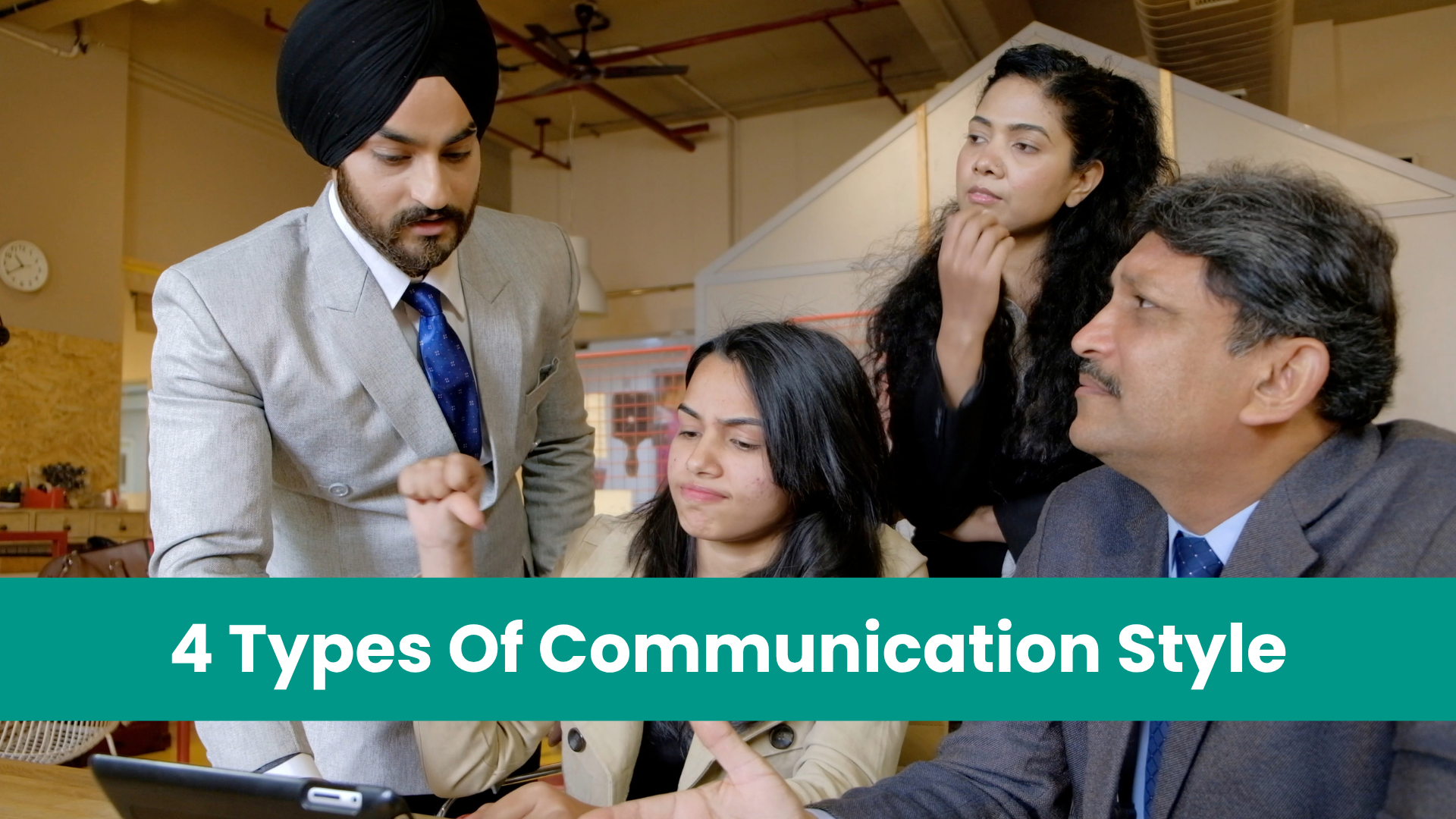Communication is the process of sharing thoughts, ideas, information and feelings between two or more people. Clear and effective communication is the foundation of every successful workplace as it ensures healthy team collaborations, increased productivity and positive work environment. Additionally, it reduces misunderstandings, builds trust among colleagues and creates an atmosphere where innovation and problem-solving can thrive.
Every individual communicates in their own way depending on their personalities, backgrounds and roles in the organization. These differences in communication style can sometimes lead to conflicts and hence it is important to learn the different communication style, their impact in office settings and which communication behaviors are most suitable for professional environments.
What Are Communication Styles?
Communication styles refer to the patterns an individual uses when sharing information or interacting with others. These are not limited to what is spoken but also include tone, body language and even the level of confidence.
In professional settings, recognizing these different communication styles is important because it improves teamwork, reduces friction and creates a productive environment. When team members understand how their colleagues communicate, it becomes easier to give feedback, solve problems and collaborate efficiently.
Different Communication Styles In The Workplace
There are primarily four core communication styles and each has its pros and cons depending on the situation.
1. Passive Communication Style
Passive communicators are typically quiet and don’t seek attention with a thought that they are maintaining peace, however they suffer from being overlooked. In a professional setting, passive communicators may struggle to set boundaries, answer with a NO or stand for themselves. They avoid expressing their opinions, needs or feelings and often go along with what others say, even when they disagree. Eventually it also leads to built-up frustration over time for them as they suppress their feelings.
In a corporate setup, this behaviour appears unapproachable as the passive communicator doesn’t openly communicate their thoughts leading to lack of clarity, misunderstandings and reduced effectiveness in team collaborations. Here are some other characteristics of a passive communicator:
- Avoids confrontation
- Soft voice or hesitant tone
- Poor eye contact
- Often apologetic
2. Aggressive Communication Style
An aggressive communicator is someone who expresses their thoughts or demands in a direct, forceful and often dominating manner. This style prioritizes their own needs and viewpoints, frequently disregarding the feelings, rights or perspectives of others. In conversations, aggressive communicators may interrupt, speak in a loud or firm tone and use intimidating body language to assert control. While this approach may get results in the short term, it often leads to conflict, damaged relationships and a negative work environment, as it can make others feel disrespected, undervalued or anxious. Here are some other characteristics of a passive communicator:
- Dominates conversation
- Uses a loud or harsh tone
- Interrupts others
- Blames or criticizes frequently
3. Passive-Aggressive Communication Style
The passive-aggressive communication style is a combination of both passive and aggressive behaviors. Individuals with this style often appear calm, quiet or agreeable on the surface, but underneath, they may feel frustrated and angry. Instead of expressing their emotions openly, they communicate indirectly-through sarcasm, silent treatment, subtle digs, etc. This behavior can be confusing for others and may create tension in the workplace, as the underlying issues remain unaddressed and also lead to team’s unproductive. It damages trust and creates a toxic work environment. Here are some other characteristics of a passive communicator:
- Sarcastic tone
- Silent treatment or backhanded comments
- Denial of problems while showing resentment
4. Assertive Communication Style (Highly Recommended)
An assertive communicator expresses their needs, thoughts and feelings in a direct, honest and respectful way. This is considered the healthiest and most effective communication style in professional environments. Assertive communicators express their thoughts, needs and feelings clearly and confidently, while also respecting the rights and opinions of others. It encourages open dialogue and team collaboration. They maintain eye contact, use a calm steady tone and actively listen during conversations. This communication style encourages open dialogue, reduces misunderstandings and helps build trust and mutual respect among colleagues. Also, assertive communication promotes clarity, confidence and cooperation, which is often seen as the most productive and healthiest communication behavior in the workplace.
- Good eye contact
- Active listening
- Respectful of others opinions
Importance Of Knowing Communication Styles
Knowing the communication styles of oneself and others has several advantages, such as:
- Increases self-awareness and empathy
- Reduces workplace conflict
- Improves team decision-making
- Enhances leadership and management effectiveness
- Encourages diversity of thought and respectful discussions
In today’s hybrid or remote workplaces, communication is even more crucial. Recognizing tone in text, maintaining clarity in virtual meetings and using proper salutations in emails are all part of communication etiquette.
When And Where To Use Communication Styles
As we learned that Assertive Communication Style is more respectable and should be effectively used in a professional and personal setting, other communication styles like Passive, Aggressive and Passive-Aggressive can also be used in different life/work situations. Few real life situations where communication styles can be made to use are as follows:
For Passive Communication Style
Corporate/Professional Situation: When you are dealing with an angry client or colleague, a passive communication approach can help calm the situation by not adding fuel to the fire and maintain a respectful environment/raport.
Personal Situation: During sensitive family discussions or when dealing with elderly relatives, a passive approach can maintain harmony and show respect.
For Aggressive Communication Style
Corporate/Professional Situation: During emergencies or urgent deadlines, direct and forceful communication can quickly mobilize teams and ensure immediate action without delays.
Personal Situation: When someone repeatedly violates your personal boundaries despite polite requests, aggressive communication becomes necessary to establish firm limits.
For Passive-Aggressive Communication Style
Corporate/Professional Situation: When unsure about workplace dynamics or new relationships, passive-aggressive behavior can help understand reactions without full commitment.
Personal Situation: When dealing with manipulative individuals who twist direct communication against you, indirect responses can prevent giving them ammunition.
For Assertive Communication Style
Corporate/Professional Situations: When presenting ideas, giving feedback or participating in brainstorming sessions where clear, respectful communication drives productivity.
Personal Situation: When setting boundaries and expectations for children while maintaining a loving, supportive environment.
Conclusion
Communication styles are not about labeling people, but about improving interaction, reducing friction and supporting teamwork. The assertive communication style is most productive and professional, but knowing when and how to use different styles helps navigate various situations better.
From daily conversations to email sign-offs, effective communication behavior builds trust, respect and growth. Whether you are a team member or a leader, adapting to clear and considerate communication can take your workplace success to new levels.
FAQs
Q1. What are the four main communication styles?
A- Passive, Aggressive, Passive-Aggressive and Assertive.
Q2. Which communication style is ideal for the workplace?
A- Assertive communication is best for clarity, respect and productivity.
Q3. Can communication styles change over time?
A- Yes, with awareness and training, people can develop more effective communication habits.
Q4. How can I identify my communication style?
A- Observe how you handle conflict, express opinions and respond to feedback. Self-assessment tools and feedback from colleagues also help.
Q5. Why is understanding communication styles important in a team?
A- It improves understanding, prevents miscommunication and builds a collaborative work culture.






 Facebook
Facebook Instagram
Instagram Twitter
Twitter